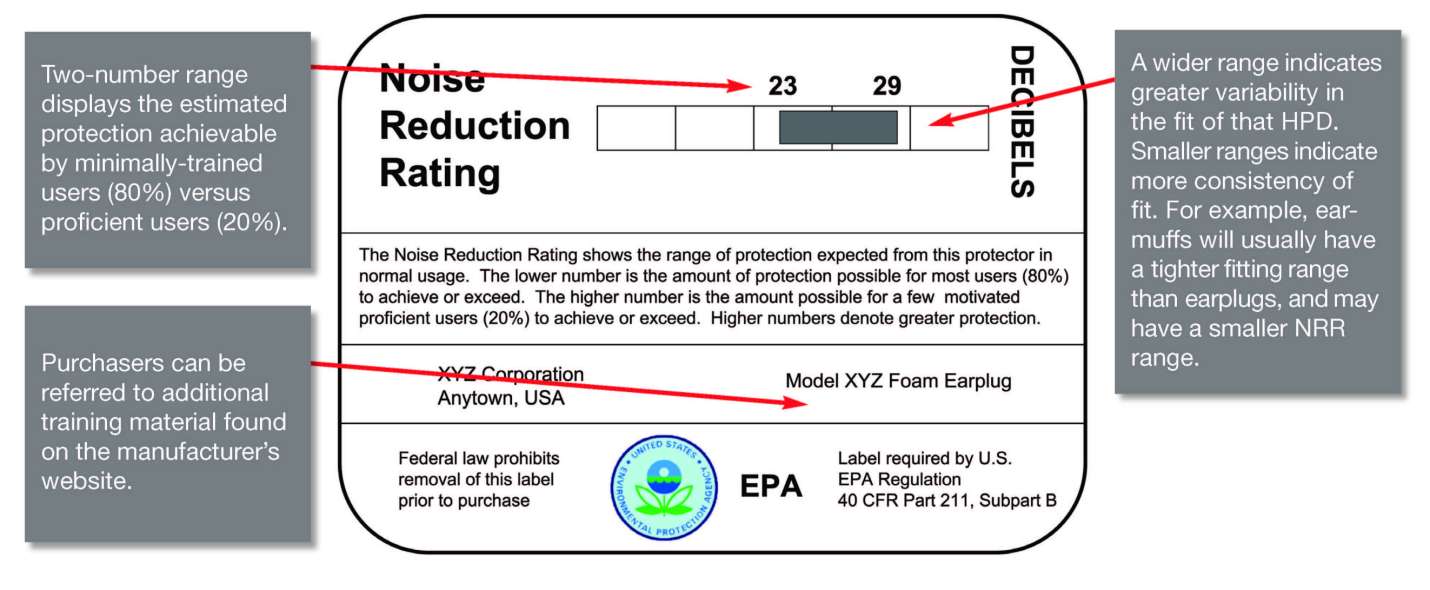- Home
- Blog
- Noise Suppression
- How do You Calculate Noise Reduction Rating (NRR)?

Whether involved in industries that utilize heavy machinery or other loud equipment, protecting workers' hearing is a priority. So, to gain a deeper understanding of an essential aspect of noise protection, let's explore the concept of the Noise Reduction Rating (NRR).
The NRR serves as a commonly used method to quantify the level of noise reduction provided by various types of hearing protectors. To start, when measuring noise reduction ratings, the decibel (dB) is used as a standard unit of measurement to describe the intensity or compression of a particular sound level. It then assigns a value ranging from 0 to approximately 30, with higher values indicating greater noise reduction capabilities. Therefore, a higher NRR associated with a hearing protector indicates a higher potential for reducing noise exposure. This guide aims to help break down NRR and provides a step-by-step approach to calculating it accurately.

-
Understanding Noise Reduction Rating (NRR):
NRR is a standardized measurement used to quantify the effectiveness of hearing protection devices, such as earplugs and earmuffs. It indicates the level of noise reduction provided by these devices in decibels (dB). The higher the NRR value, the greater the noise reduction rating.
-
Gather the Necessary Information:
To calculate NRR, you'll need specific information from the hearing protection device manufacturer or supplier. This typically includes the Sound Pressure Level (SPL) measurements for unprotected noise exposure and protected noise exposure when using the device.
-
Determine the Unprotected Noise Exposure Level:
To begin, you must determine the SPL of the noise environment without any hearing protection. This measurement represents the noise level experienced before using any hearing protection device.
-
Determine the Protected Noise Exposure Level:
Next, measure the SPL of the noise environment while wearing the hearing protection device correctly. Ensure that you follow the manufacturer's instructions precisely to achieve accurate results.
-
Calculate the Noise Reduction Level (NRL):
To calculate the Noise Reduction Level (NRL), subtract the Protected Noise Exposure Level from the Unprotected Noise Exposure Level. NRL = Unprotected Noise Exposure Level - Protected Noise Exposure Level.
-
Apply the Attenuation Adjustment:
An NRR is typically adjusted to account for real-world conditions and individual variations. The adjustment value is subtracted from the NRL. Common attenuation adjustment values are 3dB for earmuffs and 7dB for earplugs. Adjusted NRL = NRL - Attenuation Adjustment.
-
Calculate the NRR:
The final step is to divide the adjusted NRL by 2 to obtain the NRR. NRR = Adjusted NRL / 2.
-
Interpretation of NRR:
The NRR value represents the estimated reduction in noise level achieved by wearing the hearing protection device. For example, an NRR of 20dB implies that the noise level reaching the ear is approximately 20dB lower than the measured unprotected noise exposure level.
Example: A person who is working in a loud environment may be exposed to a noise of 90 dB(A). If an individual is wearing hearing protection equipment with an NRR of about 30dB, the noise exposure amount would not be lowered to 60 dB(A). Instead, it would be lowered to 78.5 dB(A).
Solution:
- Subtract seven from the NRR number, which is given in decibels
- Divide the result by two
- Subtract the result from the original noise exposure level in decibels









